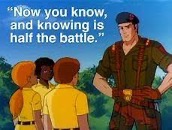Is your team not performing as well as it could? Lower motivation impacting productivity numbers? High employee turnover? Awkward and uncomfortable interactions in the workplace?
Most often the answer to these situations is not more financial incentives or team building events. Behavioral science has shown that employees feeling valued and included has much better results on productivity. And is less costly.
One big aspect of increasing productivity is combatting stereotype bias – our brains’ tendency to sacrifice sophistication for speed and jump to widely held but fixed and oversimplified ideas about a particular type of person.
In plain words, how we judge people based on our own filters of the world.
Stereotype Bias in the Workplace
Our brains have one primary focus. Keeping us safe.
To do that, they constantly scan our environment for danger, and our amygdalae immediately send signals of fight or flight to our nervous system. Just like they did back in the days when humans were still living on the Savannah.
But in our modern world, where speed and complexity have increased exponentially, our amygdalae is working in overdrive to keep us safe and has become a master of categorizing and seeing patterns. In just 0.7 seconds we will unconsciously categorize a person as fitting in either our “in group” or our “out-group”.
In-group
Our “in-group” is reserved for people we perceive to be similar to us. For our brains, similarity means safety and, in the working context, it translates into someone being trustworthy and capable. We will treat these people with more warmth, assign more responsibilities to them and assess their actions more favorably.
Out-group
The “out-group” category on the other hand, will be filled with people who are in some way different, as they trigger some of our unconscious biases. Anyone we experience as different we instinctively label as untrustworthy and less capable, even if they bring valuable skills to the table. This can come out as coldness in demeanor, dismissal of ideas and undervaluing a team member’s potential – all of which are received and registered by the employee’s brain as not being valued of included.
How we classify people
What we each perceive as different will vary depending on our filters of the world, that is our past experiences and mental models. But, in general, there are some predictable characteristics that we tend to form stereotypes about.
There’s race, gender, social background, sexual orientation and religion.
There’s also disability and physical attractiveness. For example, people we find physically pleasing we tend to think more favorably about.
And there’s also neurodiversity and personality type. For example, it’s well established that introverts are often underestimated and overlooked.
How Sales Leaders can defeat the Stereotype Bias
Stereotype bias often shows up in our interactions with teams – from how we coach people, to how we review them and finally to how we reward them.
And while it’s important to tame, it’s not easy. Why?
Awareness is only half the battle

Research has shown that becoming aware of one’s own biases is not sufficient to overcome them — a phenomenon referred to as the G. I. Joe fallacy, courtesy of the famous cartoon slogan “Now you know, and knowing is half the battle!”
Just like visual illusions, most of these implicit associations our brains make are difficult or impossible to break through conscious reflection. Stereotype bias requires more than awareness to be tamed. It requires reminders and solid evidence.
Systematizing decisions through daily behavior data
One effective and efficient way to ensure that people are reviewed against what they do and not who they are, is using technology to get their daily behavior data easily and accurately.
This daily behavior data shows us not what we think people do, or even what people tell us that they do, but what they are actually doing at work.
Drawing from this data, sales leader can coach their employees accurately, review them fairly and reward them accordingly.
Systematizing work in this way also motivates teams to do better knowing that they are not being unjustly stereotyped and reviewed, but they are judged on their actual behaviors at work.
[Editor’s Note: Call us to find out how we can help you steer clear of the stereotype bias in your sales teams using worxogo Nudge Coach and behavior data.]
AUTHOR BIO

Dr. Melina Moleskis, founder of meta-decisions, is a decision scientist and behavioral economist. In her work, she applies the behavioral science method and behaviorally-informed decision-making tools to improve the process, and results, of decision-making in organizations. Melina holds a PhD in Managerial Decision Sciences from IESE Business School, MBA from NYU Stern with a specialization in Strategy. She draws from her decade+ experience in consulting that gave her a front row seat into workplace decision-making.


